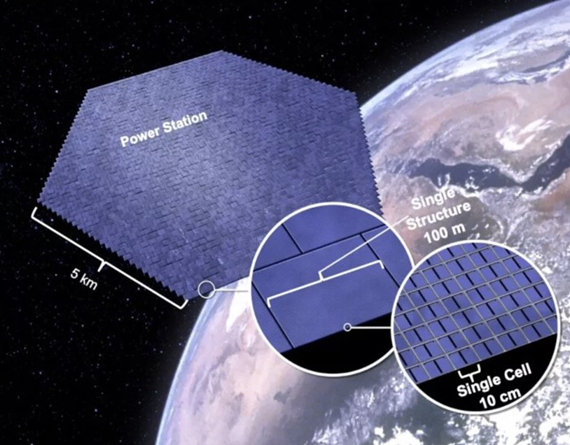To maximize the performance of absorbing sunlight, researchers are considering a plan to send the solar panel to a place where the sun never sets, that is, outer space. In theory, if a bunch of solar panels were sent into orbit, they would absorb sunlight and store a lot of electricity, even on foggy days and at darkest nights. If this electricity were wirelessly transmitted to Earth, our planet could use renewable, clean energy 24 hours a day. This will greatly reduce our carbon footprint.

The real advantage of space solar is the ability to provide solar energy day and night. In the context of a worsening climate crisis, the success of space-based solar power may be more important than ever. The state of the climate is now in focus as world leaders gather in Glasgow, Scotland for the COP26 summit, which refers to as the last chance to get the crisis under control. Space solar power has lived in the minds of science fiction lovers and scientists for decades. Since Bell Labs invented the first concrete solar panel in the 1950s, international scientists have been working to make space-based solar science fiction a reality. Japanese researchers, the U.S. military and a team from Caltech spearhead the space solar project.
In the late 1960s and 1970s, during the heyday of the Apollo program, there was extensive investigation about space solar energy. Unfortunately, the technology of that era was not advanced enough to achieve this feat at low cost due to the weight and volume of the material. Getting a classic solar panel into space on a rocket with low costs is very difficult. Now, Caltech has a unique approach focused on reducing component weights by 10 to 100 times, which is critical to reducing manufacturing and launch costs and making space solar power economical.
The Caltech team advocates a new type of solar panel that is lighter, more compact and foldable. They propose sending large numbers of these tile-like aerial mini solar panels into orbit. Each individual tile has everything it needs like photovoltaics to collect solar energy. When connected in space, these little cubes essentially become a giant mine of renewable energy floating around the planet. When the sun shines on these panels, they turn into bundles of direct current. In the team's mechanism, this energy would be converted into radio frequencies. The next step is to bring this energy to the Earth through microwave radiation.